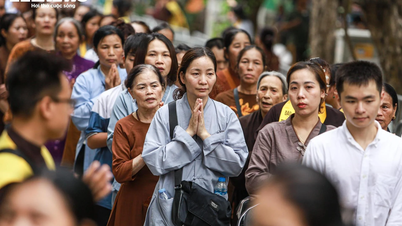The total fertility rate in 2023 in our country is only 1.96 children/woman and when the fertility rate continues to decrease for a long time, it will directly and deeply affect the population size and population structure, leaving many consequences for economic and social life.

On August 28, at the international workshop on policy consultation and solutions to prevent the trend of low fertility organized by the Ministry of Health, Mr. Le Thanh Dung, Director of the Department of Population, said that the current fertility rate nationwide is tending to decrease below the replacement level, the total fertility rate in 2023 is 1.96 children/1 woman, the lowest level ever and is forecast to continue to decrease in the following years. The trend of low and very low fertility is concentrated in some urban areas, where socio-economic conditions are developed. In particular, the Mekong Delta has an average number of children of 1.54 children/1 woman and the Southeast has 1.47 children, both below the replacement level (2.1 children/1 woman).
Up to 21/63 provinces and cities have low birth rates, accounting for about 39.37% of the country's population. Most of them are provinces and cities located in the key economic region of the South, with high urbanization and rapid economic growth.
"If the birth rate is low and prolonged, it will directly and deeply affect the population size and structure and leave many consequences such as labor shortage, rapid population aging and population decline... greatly affecting the sustainable development of the country," Mr. Le Thanh Dung emphasized.
To clarify, Mr. Pham Vu Hoang, Deputy Director of the Department of Population, said that the average age of first marriage in our country is changing towards later marriage. In 1999, the average age of first marriage was 24.1 years old; by 2019, it had increased to 25.2 years old. After 4 years, by 2023, the age of first marriage continued to increase by 2 years and is currently 27.2 years old.
In addition, urban women have children later and have fewer children than women in rural areas. The 2023 data also shows that the richest people have an average fertility rate of 2 children, the poorest have a fertility rate of 2.4 children, and those with a good standard of living and average have between 2.03 and 2.07 children. People with less than primary education have an average of 2.35 children, while those with a secondary education have only 1.98 children.

Explaining the declining birth rate, Mr. Pham Vu Hoang said that it was due to urbanization, economic development, increasing pressure to find jobs, housing, living expenses, and childcare costs. In addition, infrastructure has many shortcomings such as: lack of schools, high tuition and hospital fees...
“If the birth rate continues to decline at the current rate without any solutions to reduce it, by 2054-2059, Vietnam's population will experience negative growth and decline more rapidly. At the same time, it will entail other burdens such as too many dependents, the 4-2-1 family model (4 grandparents, 2 parents - 1 child), making child-rearing more difficult and social security more burdensome," Mr. Pham Vu Hoang warned.
NATIONAL ESTABLISHMENT
Source: https://www.sggp.org.vn/nhieu-nguoi-o-phia-nam-ngai-sinh-con-vi-ap-luc-do-thi-hoa-kinh-te-va-nha-o-post756103.html







![[Photo] Prime Minister Pham Minh Chinh chairs conference on anti-smuggling, trade fraud, and counterfeit goods](https://vphoto.vietnam.vn/thumb/1200x675/vietnam/resource/IMAGE/2025/5/14/6cd67667e99e4248b7d4f587fd21e37c)






























































































Comment (0)